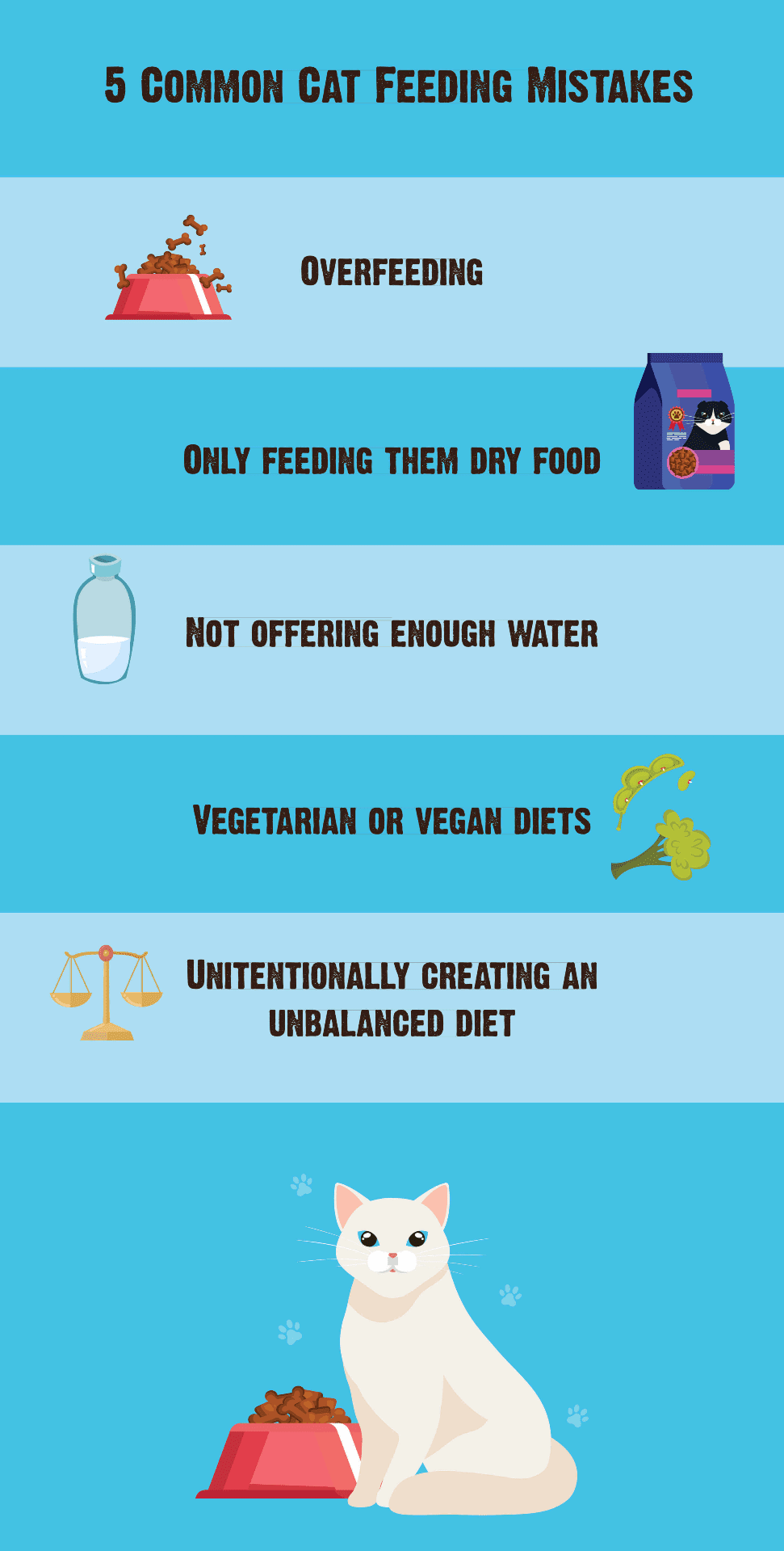Recent years have seen tremendous growth in raw food diets for cats and dogs. As obligate carnivores, cats can especially thrive on a complete, balanced and safely prepared raw diet. However, feeding your cat a raw diet is a significant responsibility — and it’s one that many experts advise against. Read on for the details.
1. What is a Raw Diet?
Raw can be a broad term, including freeze-dried or dehydrated options. Generally, a raw diet is one that includes animal protein (typically muscle meat), organs, bones and a fiber source. To be considered truly "raw," the food is not processed using heat.

2. What Are the Benefits of a Raw Food Diet for Cats?
For cats, a raw diet:
- Supports dental health
- Encourages water intake
- Provides more efficient protein due to lack of processing
- Includes lower carbohydrate levels to help prevent obesity/diabetes
There are currently many commercially available raw diets. With time and education, preparation can be done at home.

3. Are Raw Food Diets Safe for Cats?
The risks of well-known bacteria like Salmonella and E.coli are very real in raw diets. Although cats are less susceptible to these dangers due to shorter GI systems and therefore less exposure to harm, the risk of cross-contamination is alarming — not to mention that these harmful bacteria can negatively affect cats.
Food safety and thorough cleaning procedures must be adhered to. High Pressure Processing (HPP), a food safety step using pressure rather than heat, is often used commercially to ensure safe nutrition. Cat parents should always adhere to the feeding guidelines and storage recommendations provided by the supplier.
4. What Health Concerns Are Helped By a Raw Diet?
As evolved desert dwellers, cats lack a strong thirst drive. The tendency of raw diets to contain more moisture offers added hydration, helping to alleviate some urinary problems and improve overall health.
Perhaps the most common health concern that can be helped by a raw diet is kidney disease. The kidneys, when healthy, work wonders metabolizing protein and processing waste. Heat processing damages the foods' amino acid profile, creating lower protein efficiency (usability by the cat) and waste to be processed by the kidneys. In turn, a diet free of heat damage can improve kidney health.
5. Who Should Not Use Raw Diets?
The risks of raw feeding are real — especially if pet owners are not able to prepare homemade complete, balanced and safe meals, or purchase and properly store raw meals.
Due to the risks to the animal and any humans cohabitating with them, the Centers for Disease Control and Prevention (CDC) advise against feeding raw diets to pets.
6. Are Raw Food Diets Complete & Balanced?
Pet parents familiar with nutrition product labels have probably seen the term "complete and balanced" before. This term signifies that the product meets the required nutrient inclusion for a given animal's life stage — which is determined by AAFCO, the voluntary association that regulates the safety of animal feed in the marketplace by working with animal nutritionists to create guidelines.
Oftentimes a vitamin pack or nutritional supplement must be used to ensure a complete and balanced nutritional profile is achieved.
7. How Can I Prepare a Raw Food Diet?
While raw feeding may bring to mind thoughts of throwing a piece of raw meat or fish in the bowl for your cat, making a complete and balanced homemade raw diet is not that simple.
A serious danger of raw feeding is the risks posed to the human residents of a house. Food safety storage and cleaning practices must be followed. It is always best to consult an animal nutrition professional to develop a complete diet of protein from meat or fish, amino acids, vitamins and minerals, and proper water intake for your cat.
8. How Do I Transition My Cat to a Raw Diet?
Our feline companions are notoriously finicky when it comes to their diets, but providing them with the least processed nutrition possible is the best thing for them.
Transitioning to progressively less processed foods over time is usually the best bet. This can be accomplished by phasing in raw food leading to a completely raw diet. The Feline Nutrition Foundation is a non-profit dedicated to educating cat parents on the benefits of a raw diet, and offers an informative transitioning guide.
9. Why Not Just Use Dry & Canned Diets?
The aforementioned benefits of feeding your cat a raw diet are not often realized with a processed diet.
However, the barriers to feeding a safe, complete and balanced raw diet can keep cat parents from making the switch to raw. As with our own meals, a balance must be struck between convenience and healthy nutrition when it comes to providing your cat with a healthy diet.
RELATED READING: WHAT'S IN THEIR BOWL? HERE'S HOW TO READ & DECODE A PET FOOD LABEL >
10. What Are Raw Diet Alternatives?
While there is no perfect substitute for feeding a truly raw diet, the goal of providing the best nutrition possible can be approached in various ways.
Sometimes thought of as synonymous with raw diets are freeze-dried and dehydrated diets. The aim of feeding this way is to avoid heat-processed ingredients, or to achieve as minimal heat damaged nutrition possible. With RAWZ, we've worked with a team of animal nutritionists to develop raw-inspired, minimally processed nutrition options for cats.
11. What Do The Experts Say?
Speaking to PetMD, Jodie Gruenstern, DVM, believes a raw food diet may be even more important for cats than it is for dogs “because they are stricter carnivores than dogs.”
In the same article, Erika Halle, DVM, discussed how a raw diet can help with weight management. “Obesity is still possible with raw food, but much less likely than with processed, high carbohydrate food.” With diabetes and obesity being so prevalent among cats today, this is especially important.







